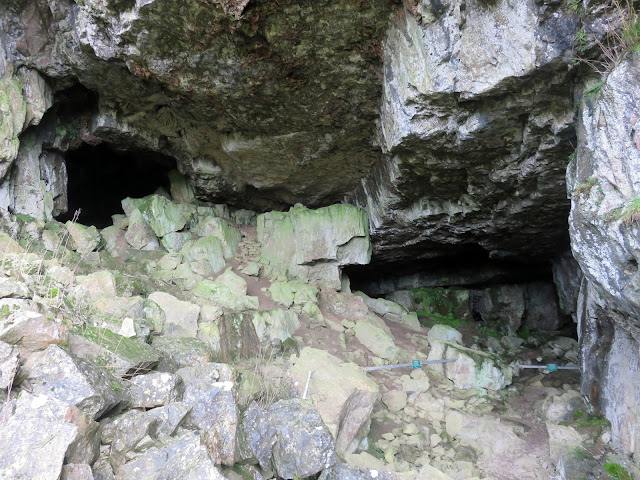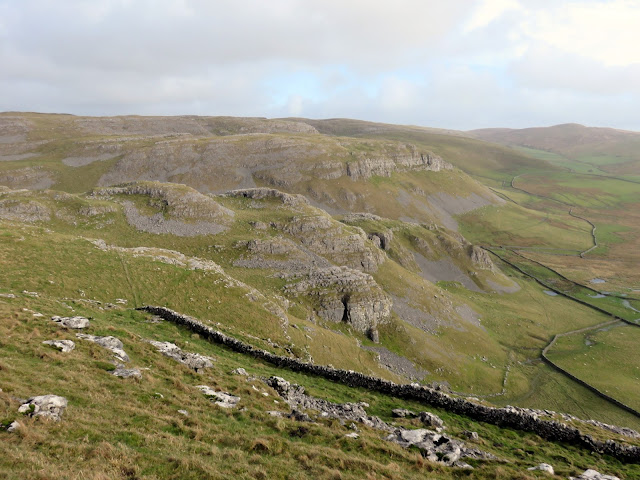This map was created using GPS Visualizer's do-it-yourself geographic utilities.
Please wait while the map data loads...
Route: Stainforth, Pennine Bridleway, Catrigg Force, Winskill Stones, Cowside, Jubilee Cave, Victoria Cave, Brent Scar, Attermire Scar, Warrendale Knotts, Yorkshire Dales High Way, Pennine Bridleway, Settle, Ribble Way, Stackhouse, Stainforth Force, Stainforth
From: Stainforth
Parking: Stainforth
Start Point: Stainforth
Region: Yorkshire Dales
Route length: 8.6 miles (13.8 km)
Time taken: 03:34
Average speed: 2.4 mph
Ascent: 594m
Descent: 602m
Summits: Warrendale Knotts (440m)
Other points of interest: Catrigg Force, Winskill Stones, Jubilee Cave, Victoria Cave, Attermire Scar, Stainforth Force
The Craven Fault is a series of geological fault lines which run along the southern and western edges of the Yorkshire Dales and includes the North Craven Fault, the Mid Craven Fault and the South Craven Fault. It is a wonderful place to walk and includes many of the Yorkshire Dales' finest features; Malham Cove and Cross Field Knotts to name a couple. Our highlights would be the scars at Attermire and the interesting Warrendale Knotts. Throw in a few waterfalls and caves and you have a classic Dales day out.
We started from Stainforth, a small village a few miles north of Settle nestled deep within limestone territory. From Stainforth, we took the Pennine Bridleway as it initially climbs steeply out of the village before wending its way across open fields towards Catrigg Force. The Pennine Bridleway is a recent long-distance route designed to complement the famous Pennine Way by allowing horse riders and cyclists to make the 200-mile journey through the Pennine hills.
 |
| The Pennine Bridleway climbs out of Stainforth |
 |
| Stainforth and the attractive Smearsett Scar |
 |
| A hint of blue in the sky - a rarity this winter |
 |
| The top of Catrigg Force |
 |
| Catrigg Force within the ravine |
 |
| The full height of Catrigg Force |
 |
| Pen-y-Ghent makes an appearance |
 |
| The Pennine Bridleway heading for Winskill Stones |
 |
| A tree set into the limestone pavement at Winskill Stones |
 |
| Looking towards Upper Winskill farm |
 |
| Jubilee Cave |
 |
| Looking out of Jubilee Cave |
 |
| The path below Brent Scar |
 |
| Victoria Cave |
 |
| Inside Victoria Cave |
 |
| Warrendale Knotts |
 |
| Attermire Scar |
 |
| Pendle Hill |
 |
| Attermire Scar |
 |
| Warrendale Knotts |
 |
| Warrendale Knotts |
 |
| The view towards Attermire Scar |
 |
| Brent Scar and Attermire Scar |
 |
| The Craven Fault |
 |
| Victoria Cave |
 |
| The summit of Warrendale Knotts |
 |
| Warrendale Knotts and the Craven Fault - classic Yorkshire Dales scenery |
 |
| Settle |
 |
| The River Ribble at Settle |
 |
| The River Ribble |
 |
| Stainforth Force and the packhorse bridge |
 |
| Stainforth Force |
 |
| Stainforth Force |
 |
| The packhorse bridge |
No comments :
Post a Comment